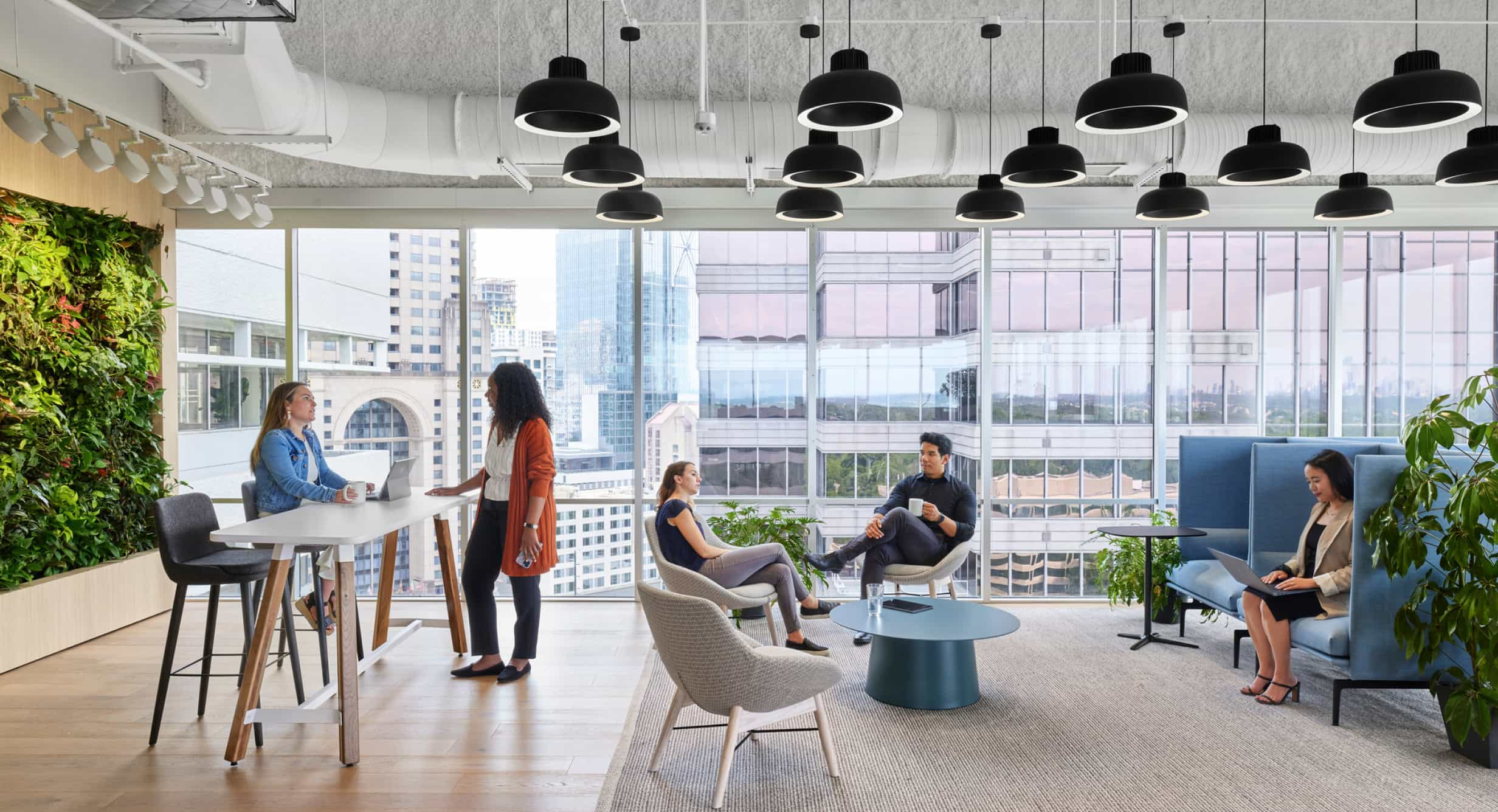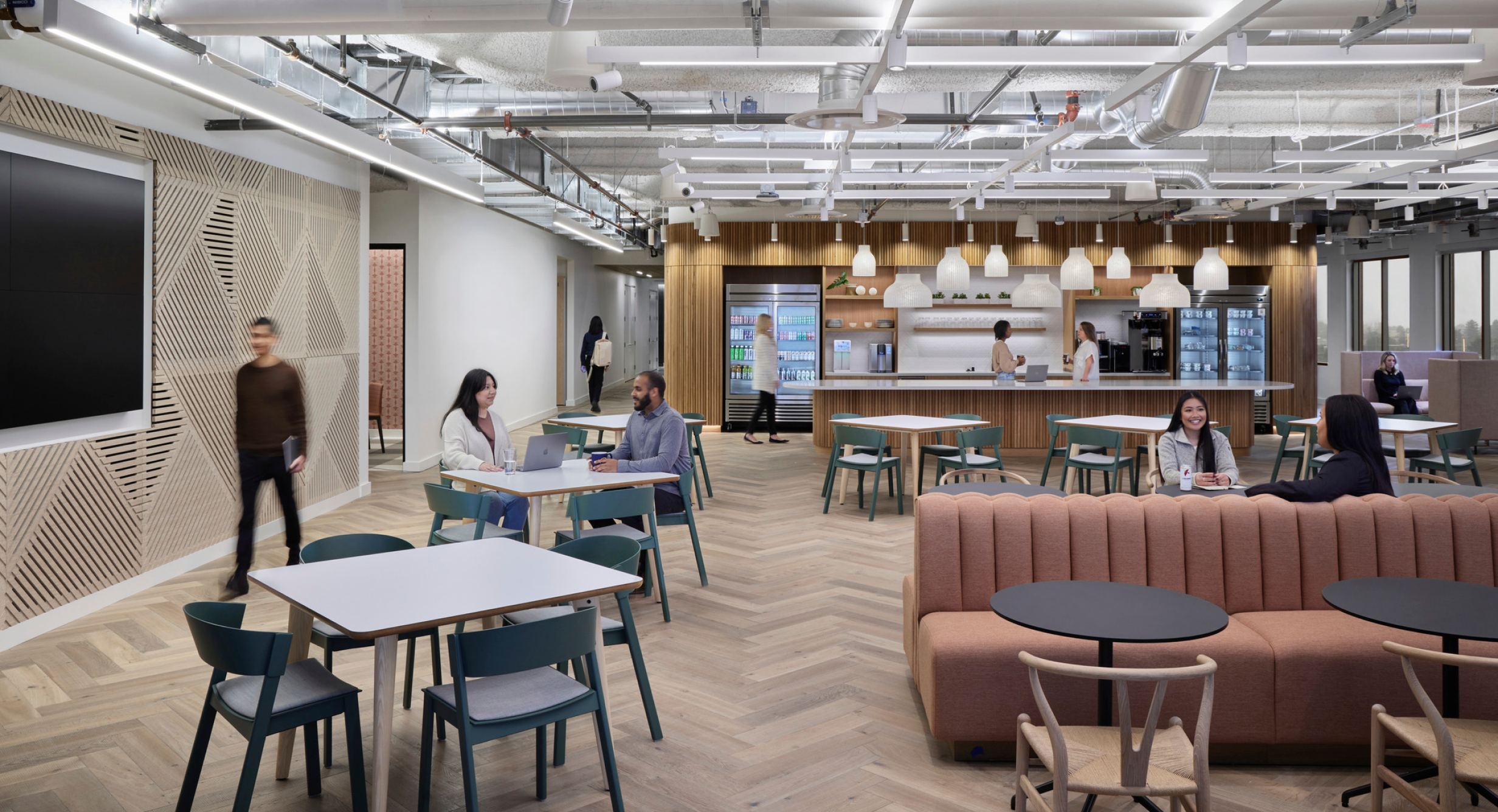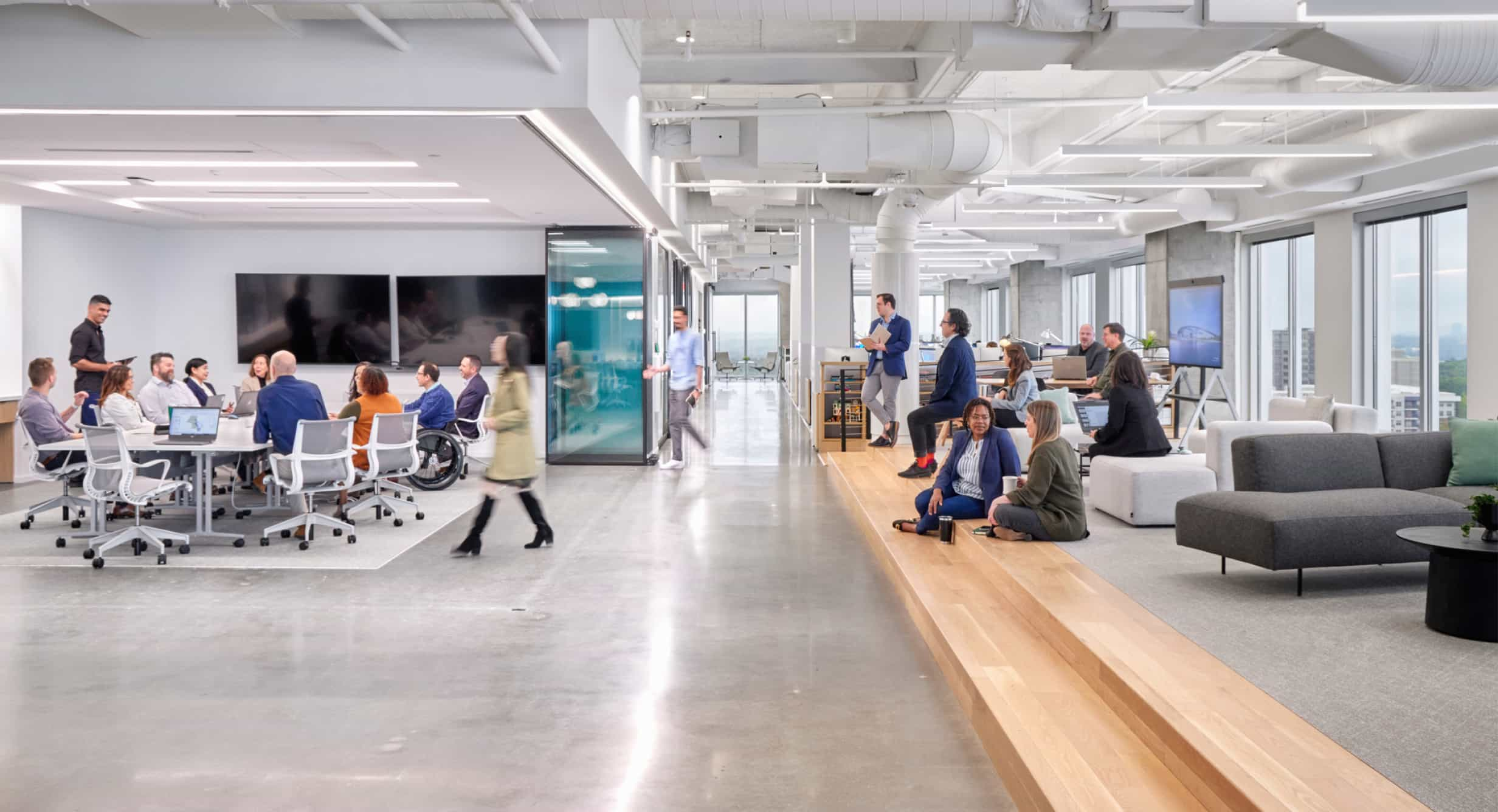
Why Come to the Office? To Unlock its Potential. Here’s How.
- Casey Lindberg, PhD
- Elizabeth Fallon
- Kate Davis
Consider this increasingly common story of an employee working in an open office:
The lease on your old office was expiring, and your CEO chose to invest in a new space. You were invited to design visioning sessions at the beginning of the design process, so you know that many people were involved in choosing the new location–and guiding the design. You have a slightly longer commute now, but this is balanced by your excitement to work in the new space with your team and your friends. And the mock-ups look so much nicer and brighter than your old space.
Your first couple of weeks working at the new office were a blur. Everyone is acclimating to the new design and its amenities, adjusting to the different commutes, discovering new restaurants for lunch and bars for after-work happy hour.
But you’ve noticed that something else is starting to happen.
When the new design was unveiled, you remembered that there were several new spaces in the office intended for specific needs such as socializing or taking mental breaks. After a month, you see that people are working in more spaces than they did in the old office. But at the same time, you realize that your coworkers are using many of those new spaces for Zoom calls, socializing, and focus work—and they’re doing it in the same space, at the same time.
Months later, you notice that people have settled into their routines. They have found their individual spots in the office where they prefer to camp out for most of the day—and you have, too. Your office was designed to have fewer workstations than employees, so you start coming in earlier to secure one. (Wasn’t there supposed to be an app to reserve seats?)
This wasn’t the way it was supposed to be, and you can’t help but think: Shouldn’t we have seen this coming?
Despite having access to new spaces designed for specific needs, you are defaulting to a workstation, just like in the old office. You pop into one of the other spaces every now and then for a team meeting. You question whether your flexible new office is too flexible? Although you enjoy the new design, you are still distracted by others when you’re trying to focus, and you are interrupting others when you’re on a Zoom call or when you’re talking to a team member at your desk.
You wonder: Why did I come to the office? What’s the point? What are we doing wrong?

A physiological perspective
Our bodies and brains evolved to spend energy efficiently – this helped us survive as a species – but we also evolved to spend quite a bit of energy responding to threats or seizing opportunities. In other words, we thrive when we have a balance between serenity and stress. We need both experiences to perform at our best. We need places that support higher levels of energy, and we also need spaces for quiet recovery and rejuvenation.
If we’re spending too much time and energy avoiding distractions or searching for spaces to work effectively, we feel conflicted because our needs may be at odds with others’. We should expend energy more wisely, and we can do that if we can easily locate office spaces to perform at peak levels. We need to leverage different spaces to critique, present, collaborate; and we need clearly defined spaces to recover, relax, and focus. How do we do it? Why aren’t we doing this already?
A common hurdle
When we default to sitting at a workstation all day, we default to unproductive patterns. We must break our bad habits. That’s why it’s time to “break” the workstation.
Here’s what’s happening. The new design should ideally create something called ‘experiential blindness’ for employees, at least initially. Essentially, this means that because an employee does not perceive a workstation is at their disposal, the rest of the spaces in the office have the potential to be remade in their perceived utility. In other words, the best way to break that habit is to remove the workstation entirely – this helps all the other intentionally designed spaces shine. This doesn’t mean it’s best to remove all the desks and monitors and chairs – it means that the concept of the default workstation can be broken most easily if an employee doesn’t perceive a default workstation at all.
A common hurdle here is when a design compromise is struck – instead of removing all of the bays of workstations, the new design offers some of the bays of workstations employees are so used to seeing. So instead of creating experiential blindness, the employees just see a hot commodity.
Affordance hunting
When experiential blindness is successfully created in a new office space, it serves as a critical moment for employees trying to establish productive behavior patterns. When an employee is trying to understand and learn where they should be doing their work best in a new space, they spend brain energy and resources, but it leads toward a pattern of more productive spending of limited energy to work smarter in the long run. In other words, they are learning how to best spend energy on the front end of portions of the day to best match their specific needs with the intended use of various spaces. We can call this “affordance hunting” – and it can save us precious energy and lower our stress levels throughout the day at the office when done successfully.
Fortunately, we’re quite adept at affordance hunting. Think back to your time in college and recall a time when you were tasked with a group project. If you lived in a dorm, you likely didn’t default to one meeting location. Instead, you first asked yourself and your team what you needed to accomplish, and how? In other words, what were the resources you needed, and what kind of environment was conducive to the work you needed to do, all while not being at odds with other students. You then chose a location and a time to meet that solved that problem.
Common sense, right? Well, not in the modern open office, where our learned history of behaviors are making change more difficult, especially when there’s a default workstation at our disposal.
When done successfully, this type of system could very well be the difference between workers spending unnecessary energy dealing with distractions throughout the day, and the ability to spend energy only when it made sense – planning their work around a collection of office spaces where they’re able to perform different work activities better than anywhere else, including at home.
More than the physical design
When we argue for the need to break the workstation, implicit in that statement – and critical to the success of the workplace – is the need to break the associated history of learned behaviors that have become norms, too. We’ve been tethered to our default habits just as much as we’ve been tethered to our default workstations. Real, adaptive change will take more than a new design of the physical space. It will depend just as much on how we design our time – how we align where we work at a given time based on our needs. Yet this combination cannot happen in a vacuum. Those new behaviors will also need the support of real, organizational buy-in and communication to break free. Working our best will take all of this – when management and leadership instill and model those habits, in space, and in time, we can unlock the true potential of the office.

